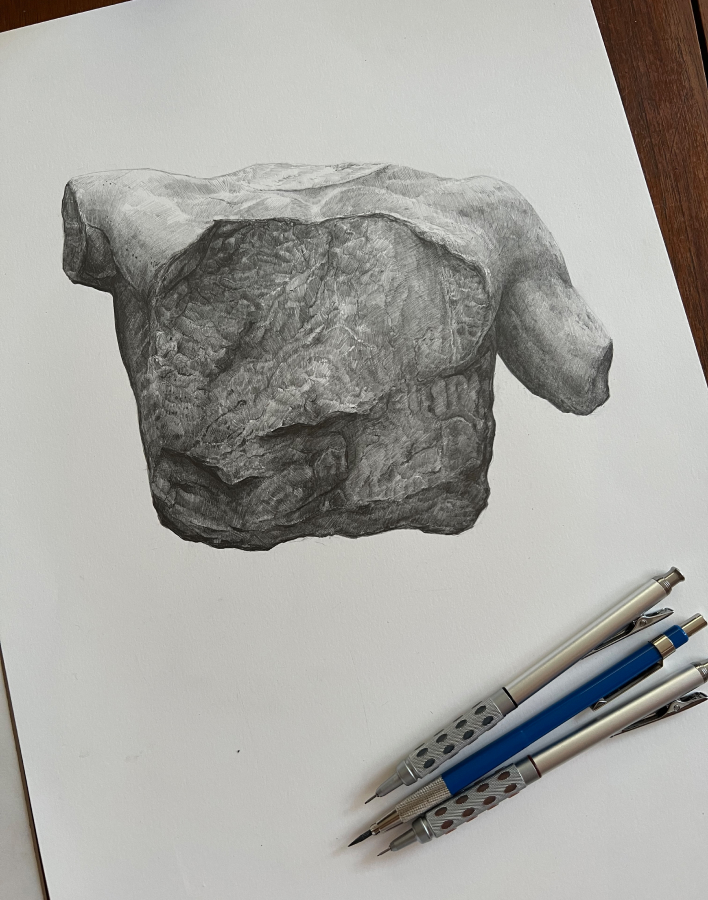A Limited Edition Print
Poseidon of
The Sea
Poseidon of The Sea is a detailed illustration of one of the Parthenon Marbles. This illustration is part of a series of works which raise awareness of stolen Greek cultural artefacts which reside in the British Museum.
The Greek government and the Hellenic Diaspora have consistently called upon the British Museum to return these cultural artefacts to their rightful home in Athens, Greece.
The British Museum has to this date declined to do so.


Framed A2 Limited Edition Print
Fine art print of the original illustration
Giclee high-quality art print
Moab Entrada Natural 300gsm
Framed in White box frame with double mount
Print Size: A2 W420mm x H594mm
Frame Size: W580mm x H760mm
Signed and Numbered by the Artist
Only 25 prints available
$900 AUD
The original illustration is made of raw graphite on textured fine art paper.
Each print is framed and prepared to order.



The god of the sea, storms, earthquakes and horses — of course.
The brother of Zeus and Hades, Poseidon is one of the 12 Olympian gods and this bust once featured atop the Parthenon wielding his well-known trident.
Poseidon was associated with the creation of springs and the taming of wild horses and celebrated in festivals, art, and worshipped for safety at sea.
This illustration is of a sculpture created by Pheidias in 438BC - 432BC which once resided on the west pediment of the ancient Parthenon.
The sculpture was stripped off the Parthenon's pediment (the large triangular roof structure of the Parthenon) by British military in 1801 who then took this and many of the Parthenon's sculptures to England where they reside to this day in London's British Museum.
"You must understand what the Parthenon Marbles mean to us. They are our pride. They are our sacrifices.
They are the supreme symbol of nobility.
They are a tribute to democratic philosophy.
They are our aspiration and our name.
They are the essence of Greekness."
Melina Mercouri, Athens Greece
Poseidon.
Location
British Museum, Item No. 1816,0610.103
Museum Title
Series: The Parthenon Sculptures
Produced by Pheidias
Culture Classical Greek
Production date 438BC - 432BC
Made in Athens, Greece
Material Marble
Marble statue from the West pediment of the Parthenon (West pediment M). The West pediment showed the mythical contest between Athena and Poseidon for supremacy over the land of Attica.
The upper part of a torso of a male figure is made up of three parts. The largest part of the torso, the back, the shoulders and the collarbones, is in the British Museum. The parts of the chest, which are separated from the torso, are in the Acropolis Museum, Athens. At the back the upper part of the shoulder is cut away. In each shoulder there is a hole. At the back of the left shoulder a circular protrusion is broken off. The break possibly indicates the end of an external support. The head, arms and legs are missing.
The statue probably represents Poseidon. He was placed just right of centre as Athena’s opponent.
Source British Museum
Photograph by Bill Zules

Print & Frame
Giclee art print.
Custom-frame to order.
Allow 2-4 weeks
for custom-framing.
Safely packed
All frames are safely packed
to avoid damage during shipping by Pack Send Australia.
World-wide shipping
Australia-wide shipping.
International shipping.
Local pick up available in Melbourne, Australia.
Shipping calculated once your order is submitted and charged to you seperately.
Subscribe to be notified of new print releases.
© Dimitri Antonopoulos

